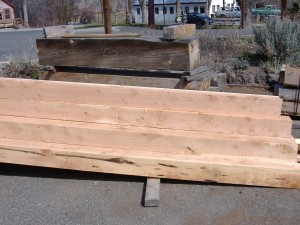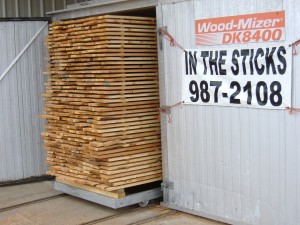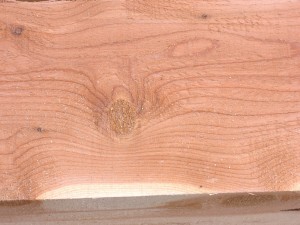Juniper Lumber
Juniper Lumber Movement
I hear over and over how juniper “moves.” Juniper may be prone to movement compared to other species. Driving the movement of wood is the presence of knots, the taper of grain and the pith. The finest timbers are free of heart center (f.o.h.c.), straight grain and a knot size limitation. That is your best shot at limiting movement while enjoying the properties of wood. It takes a tremendous tree to get a 12×16 FOHC timber. As a small diameter tree with a propensity of knots and wicked taper, juniper doesn’t stand a chance.
Historically the people who had experience with juniper were often “pioneers.” They had a guy mill up juniper logs then they made a cabinet. The doors warped or panels cracked and everyone blamed the wood. I would like to blame the source logs, lumber selection or processing. Logging juniper is very difficult. Finding the right tree that you can cut down and load into your pickup is a lot of work. Then you have to mill the tree and dry the lumber properly. Even the best of juniper has a degree of defect. If you only have ten boards to select from and your project requires eight boards, you have to turn a blind eye to the “at risk” lumber. How many of the pioneers were seasoned professional woodworkers? A lifetime of skill and a shop full of the proper equipment can craft a very different piece of furniture. Juniper still has issues with the knots, slope of grain and pith. At the volume currently available, choices now expand the opportunity to select workable wood. I admire the efforts of the pioneers. No one can fault them for creating something new and beautiful from a local resource. I do think that some of the problems associated with juniper are behind us now.
I have not mentioned “kiln dried” because I do not think that the kiln is what makes a board stay straight. The kiln kills the insects, sets the pitch and speeds the drying process. A board with internal tension is a board looking to move. The kiln does not change that reality. In The Sticks sells kiln dried lumber but the kiln is not what makes the board stable.
Technology has been able to make other unworkable species come in to service. Twenty years ago Alder was “poor mans maple.” Rustic hickory was un-saleable junk. Now alder and hickory cabinets are popular. Modern machinery features carbide blades, spiral planers and wide bed sanders. The glues and finishes available are a modern miracle as well. The pioneers sharpened their tools with sandstone. Modern tools are sharpened with diamonds. As juniper steps onto the modern stage as a beautiful and local resource, Juniper movement is manageable.


